Abstract
1. The effects of hypoxia on slow-wave sleep (SWS) and of SWS on respiratory responses to hypoxia were investigated on rats provided with chronically implanted cortical electrodes. 2. During the daytime (5-7 hr periods) the proportion of time spent in SWS was 45% (S.E. +/- 1.0%) when the rats breathed air. Exposure to 10% O2 (equivalent to 18,000 ft.) reduced this proportion to 27% (S.E. +/- 2.5%). During hypoxia the intensity of e.e.g. activity in SWS (mean, rectified slow-wave voltage) rarely equalled the normal values characteristic of the same rats in fully developed SWS breathing air. The normal pattern of 5-15 min episodes of SWS was changed by hypoxia to a series of brief (2-3 min) incompletely developed episodes. 3. Addition of CO2 to inspired gas failed to prevent the reduction of SWS during hypoxia. CO2 in normal O2 did not alter sleep significantly. The effects of hypoxia on sleep therefore depend upon changes in O2 pressure rather than upon changes in CO2. 4. The effect of SWS on respiration of rats breathing air was to decrease frequency and minute volume by 10-20%. In hypoxia, however, the frequency increased markedly when the animals entered SWS ; minute volume was not significantly changed. It follows that stimulation of breathing by hypoxia is greater during SWS than during wakefulness. 5. The anomalous increase of respiratory frequency when hypoxic rats entered SWS was abolished by addition of CO2 to the hypoxic gas mixture. 6. Steady-state gaseous metabolism (Vo2 Vco2) was decreased 18 +/- 3% during hypoxia and was increased 31 +/- 4% during exposure to 5% CO2. The implications of these changes for interpretation of respiratory responses to O2 and CO2 are discussed.
Full text
PDF
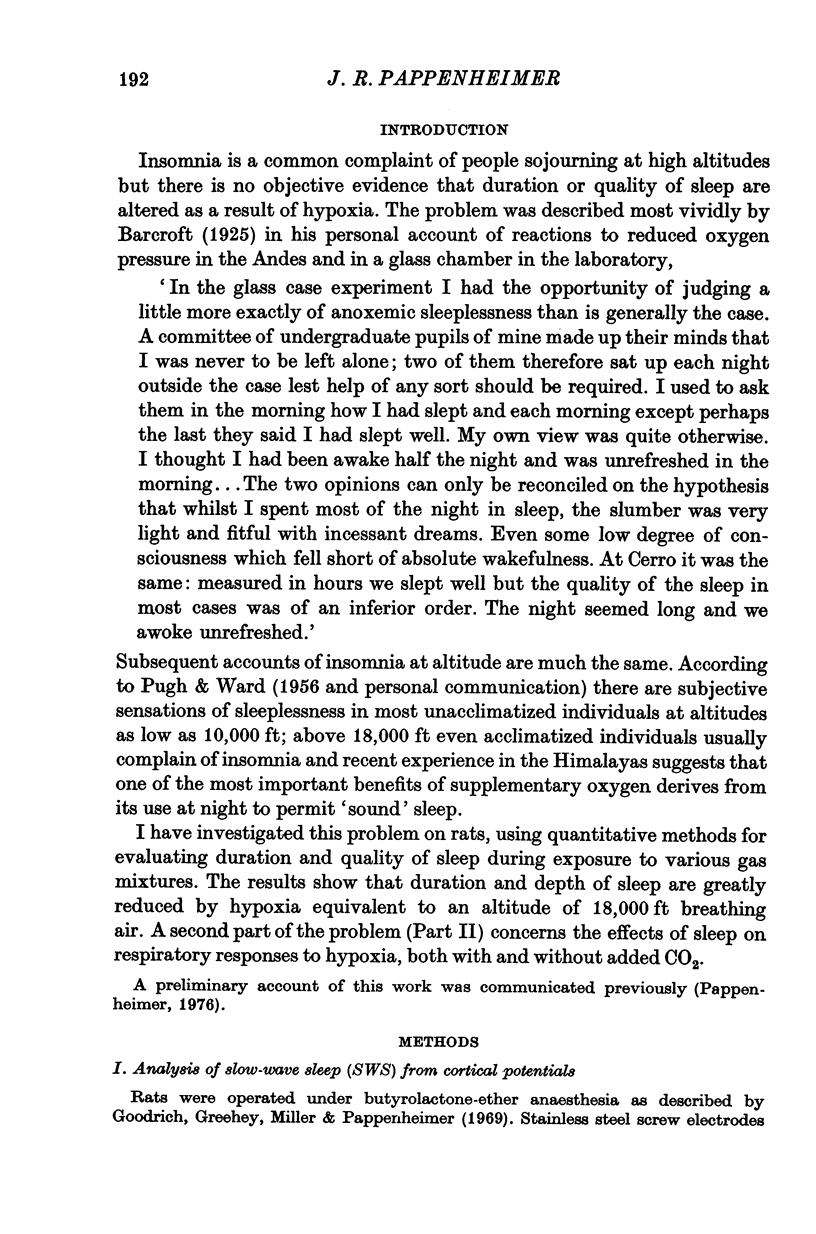
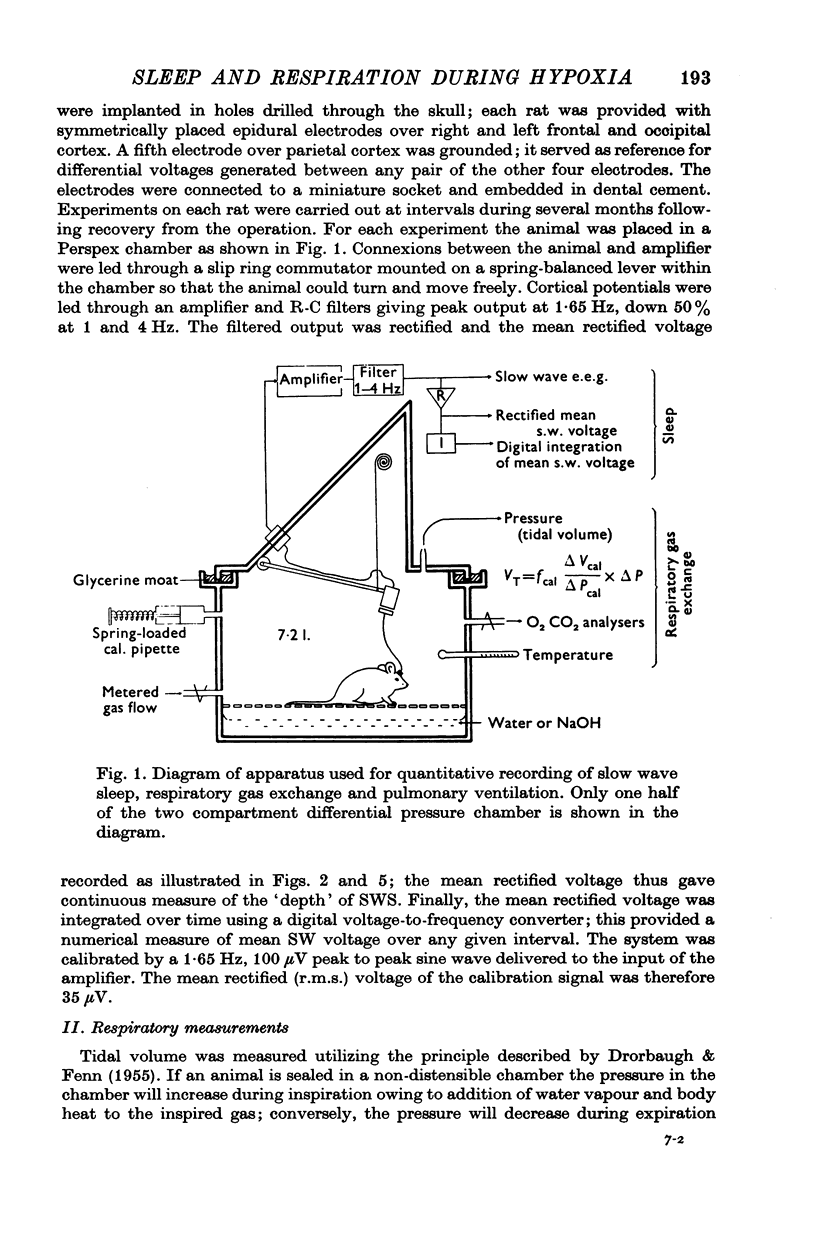
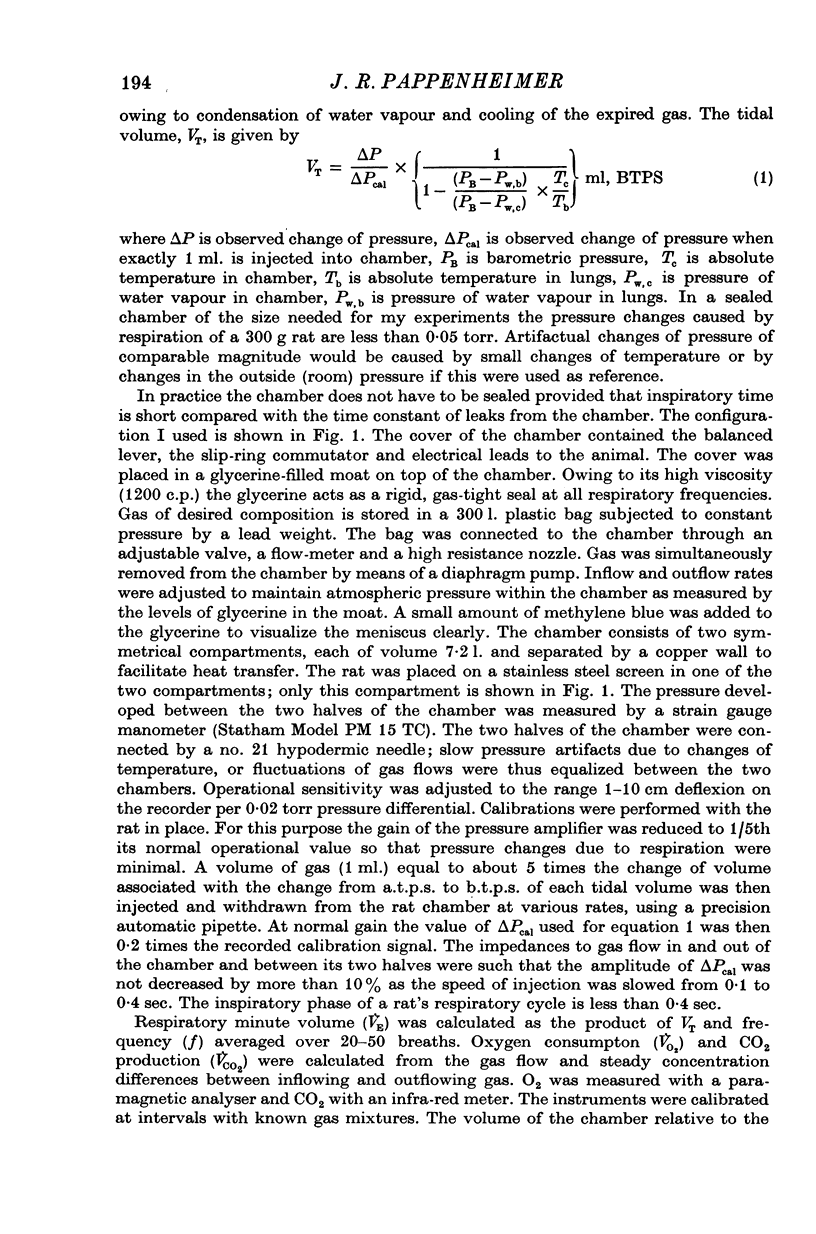
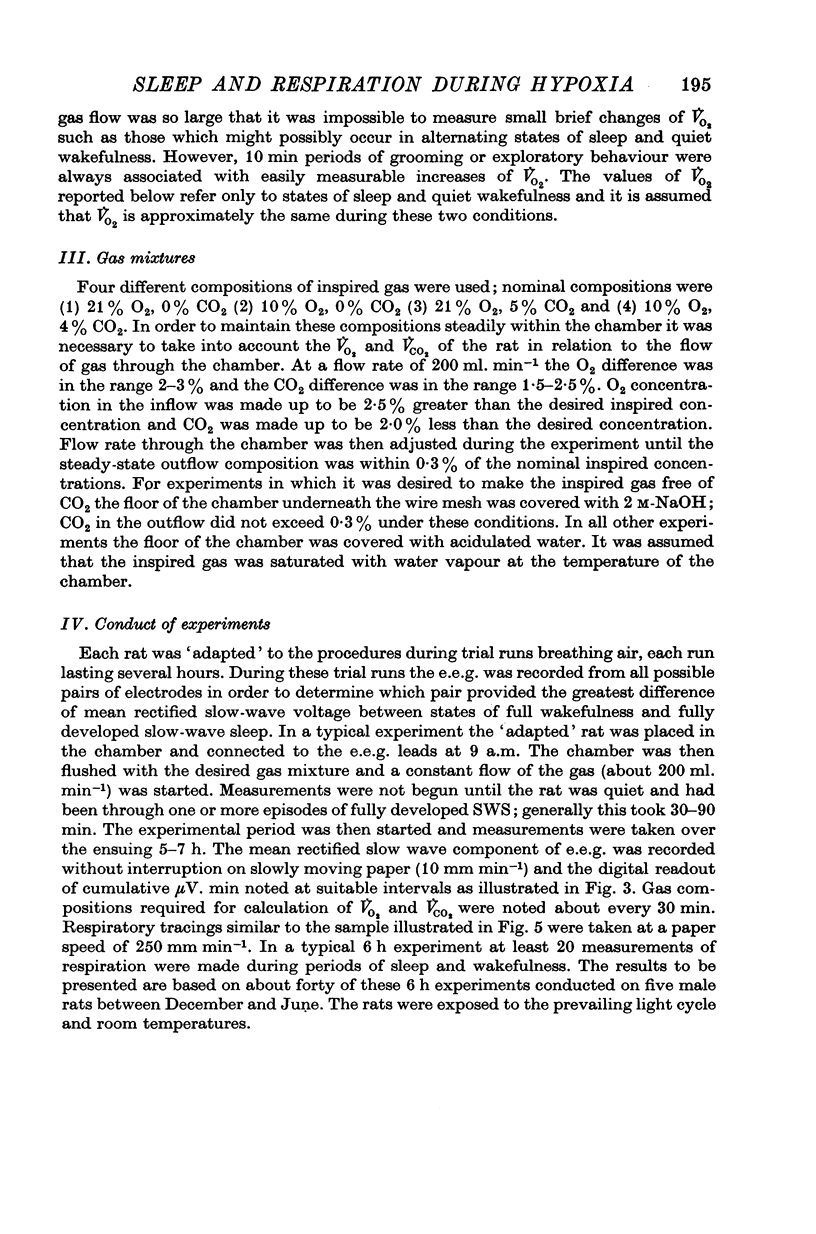
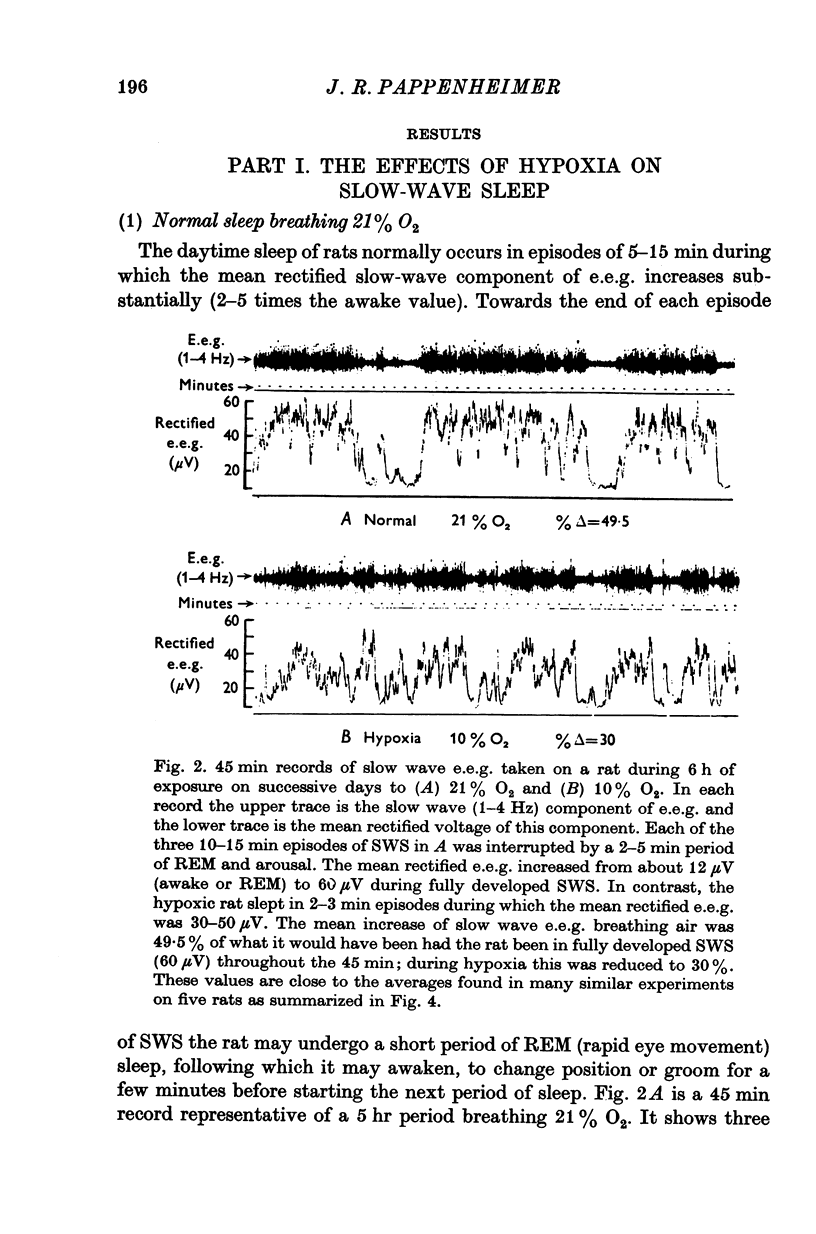
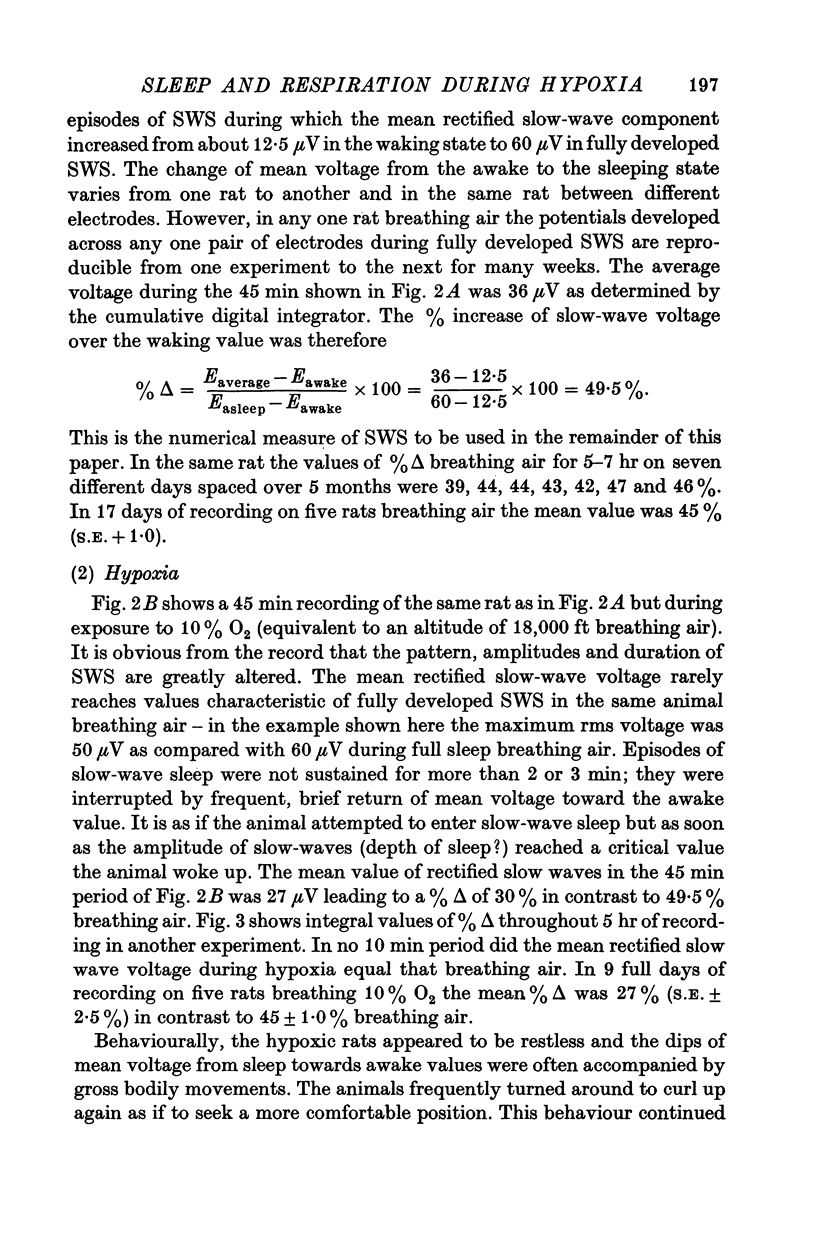
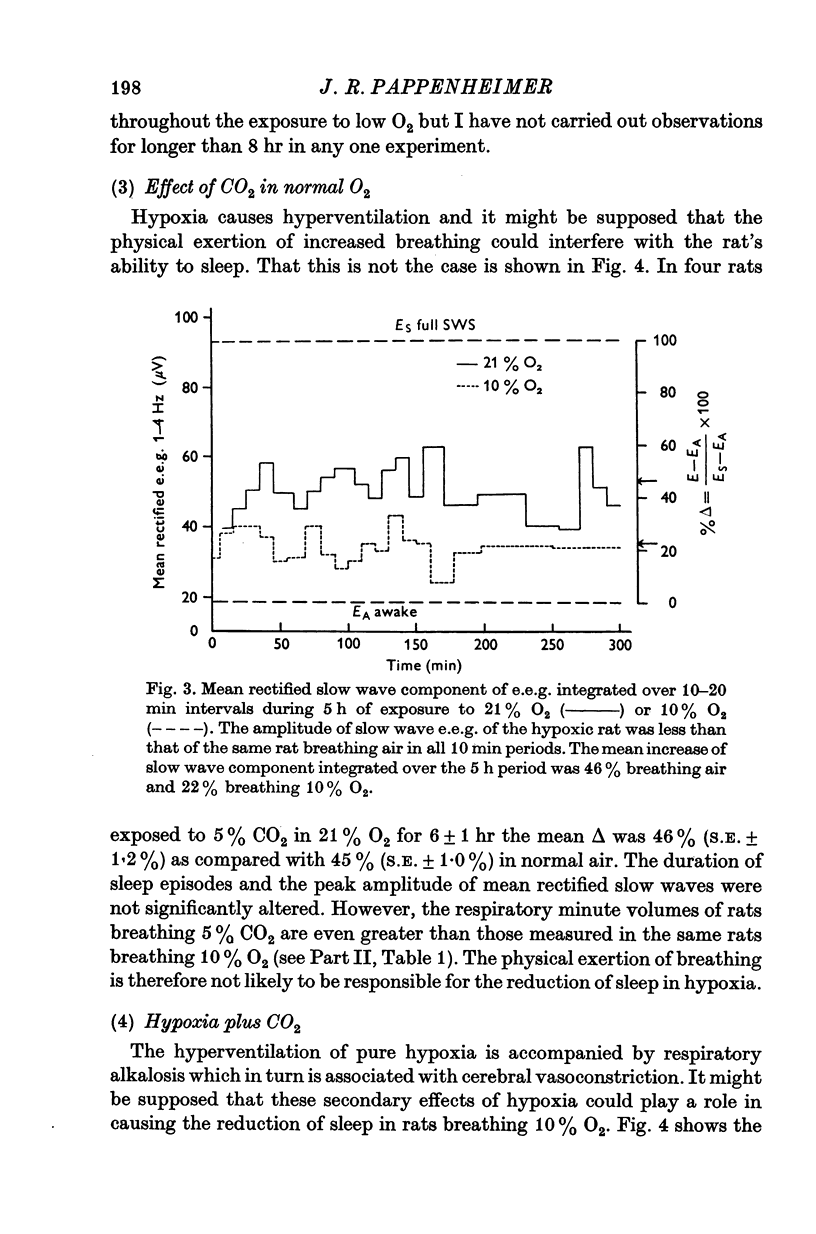
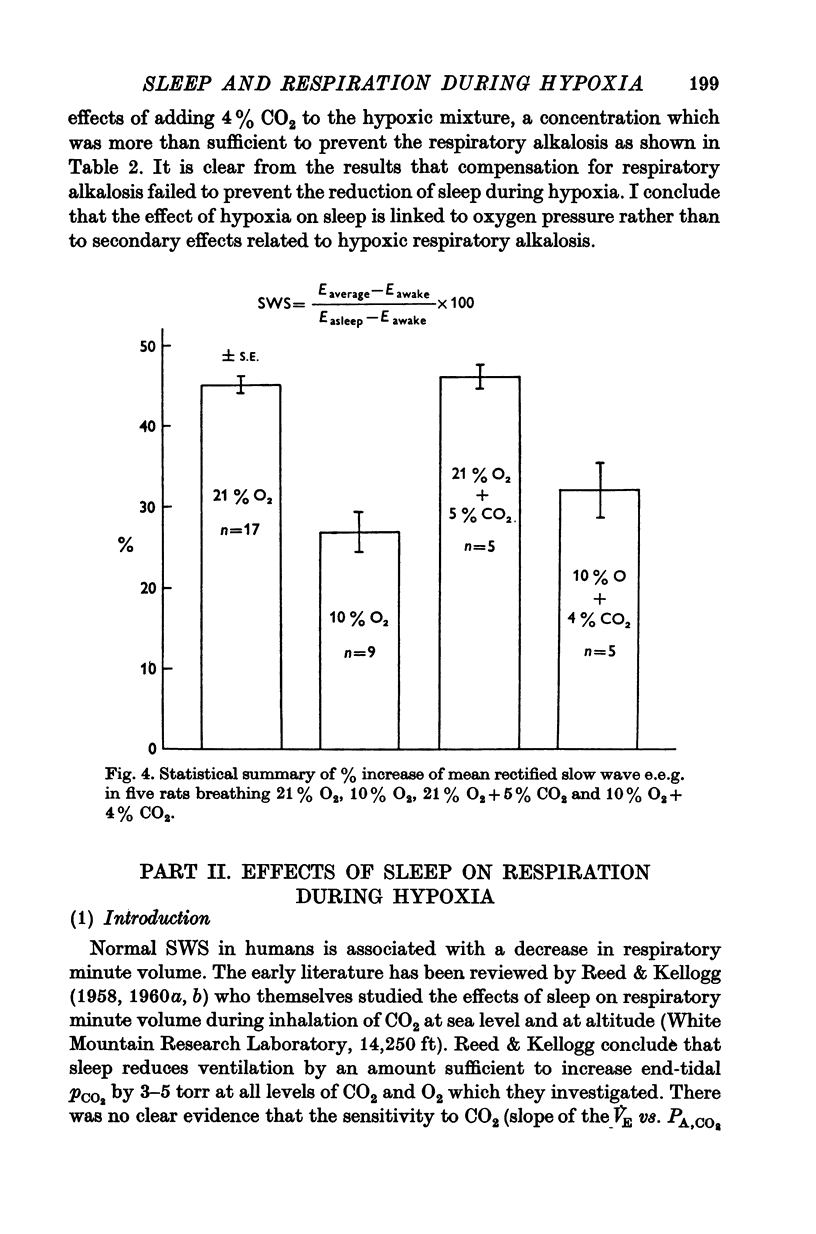
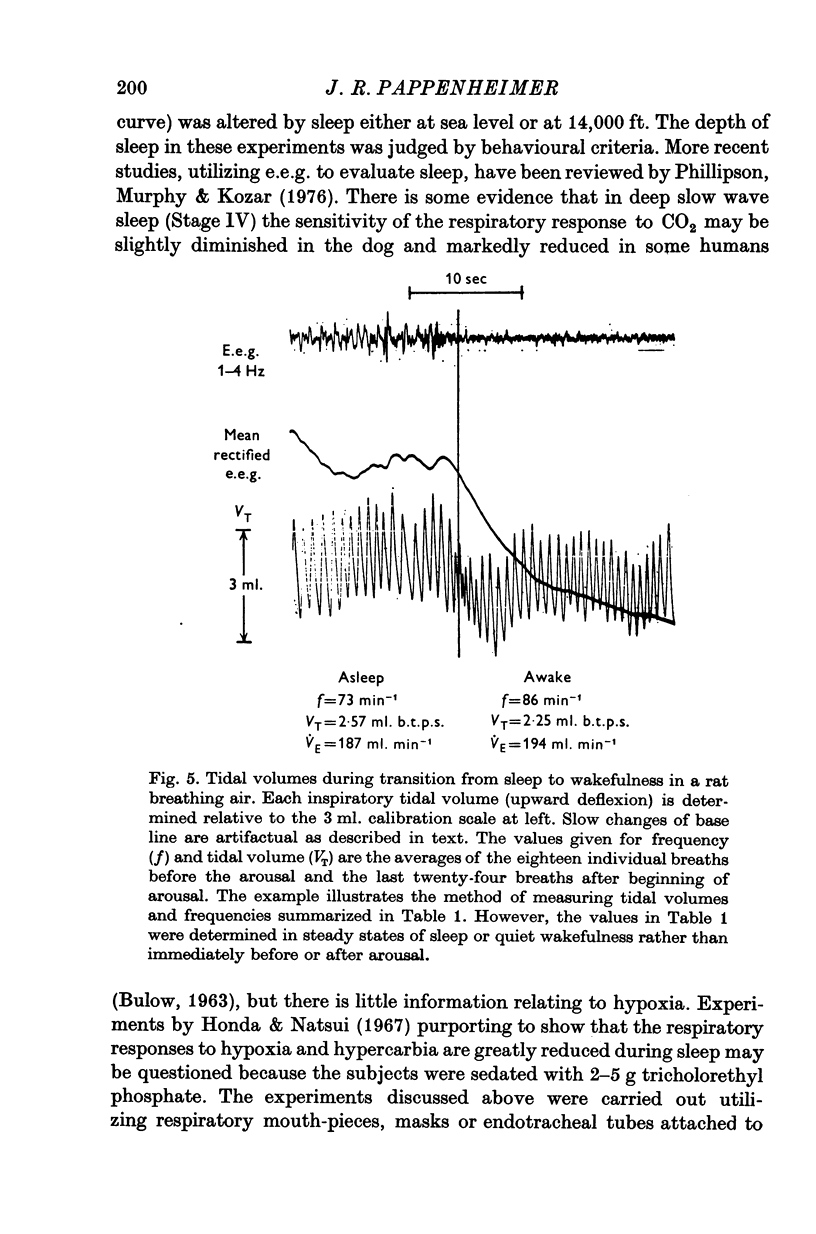
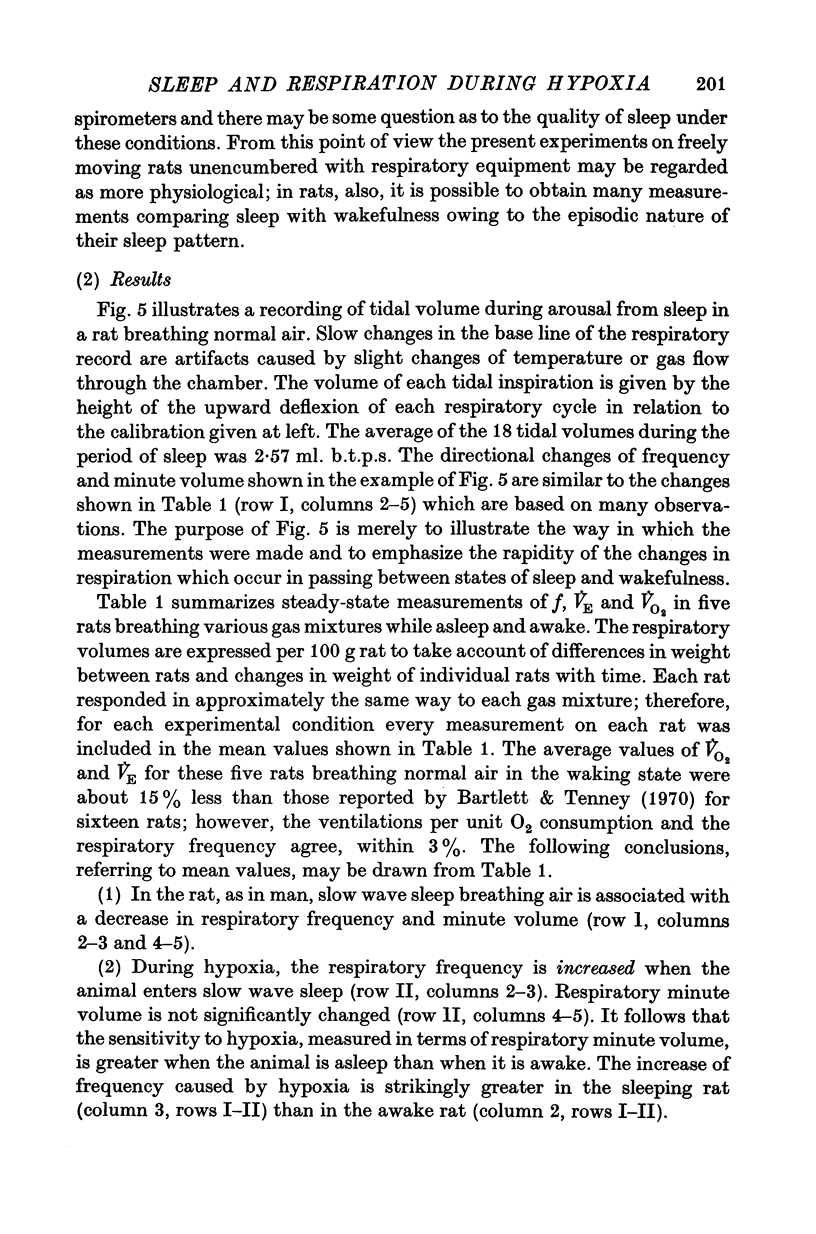
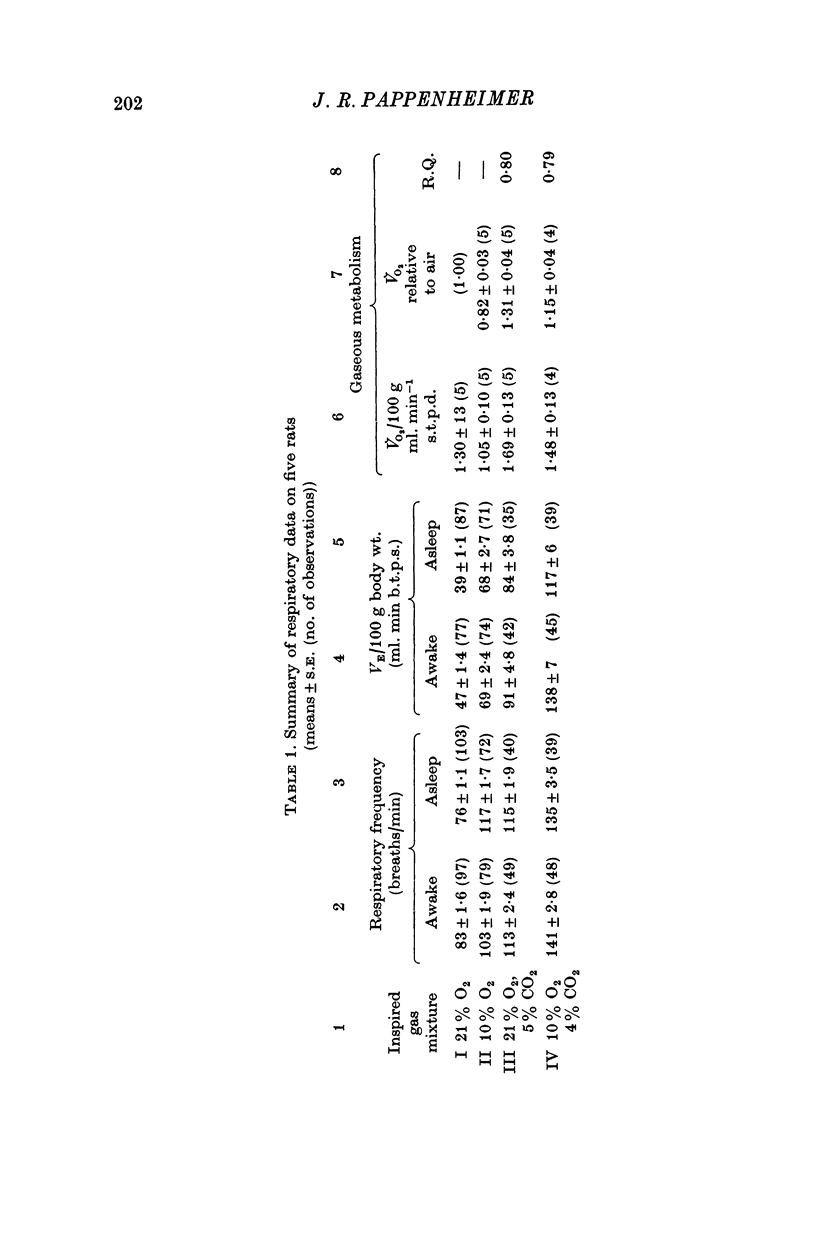
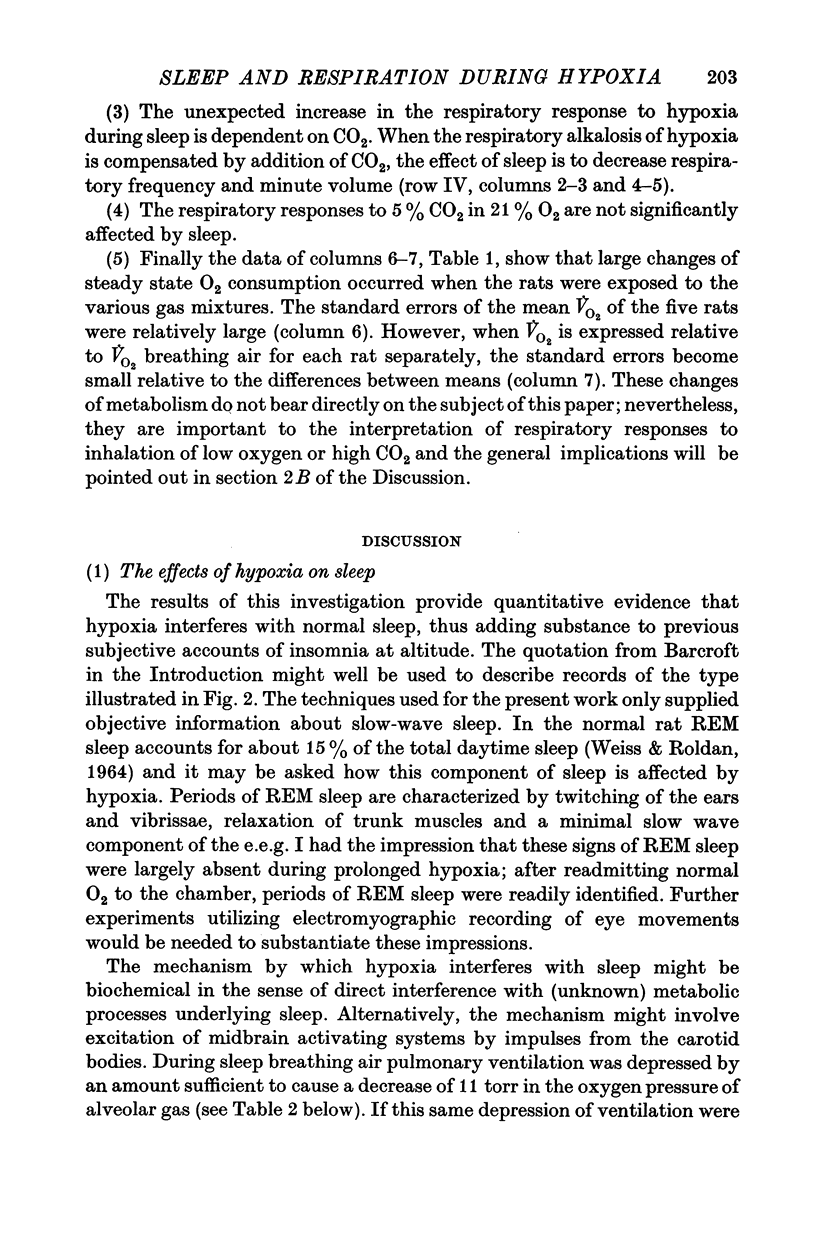
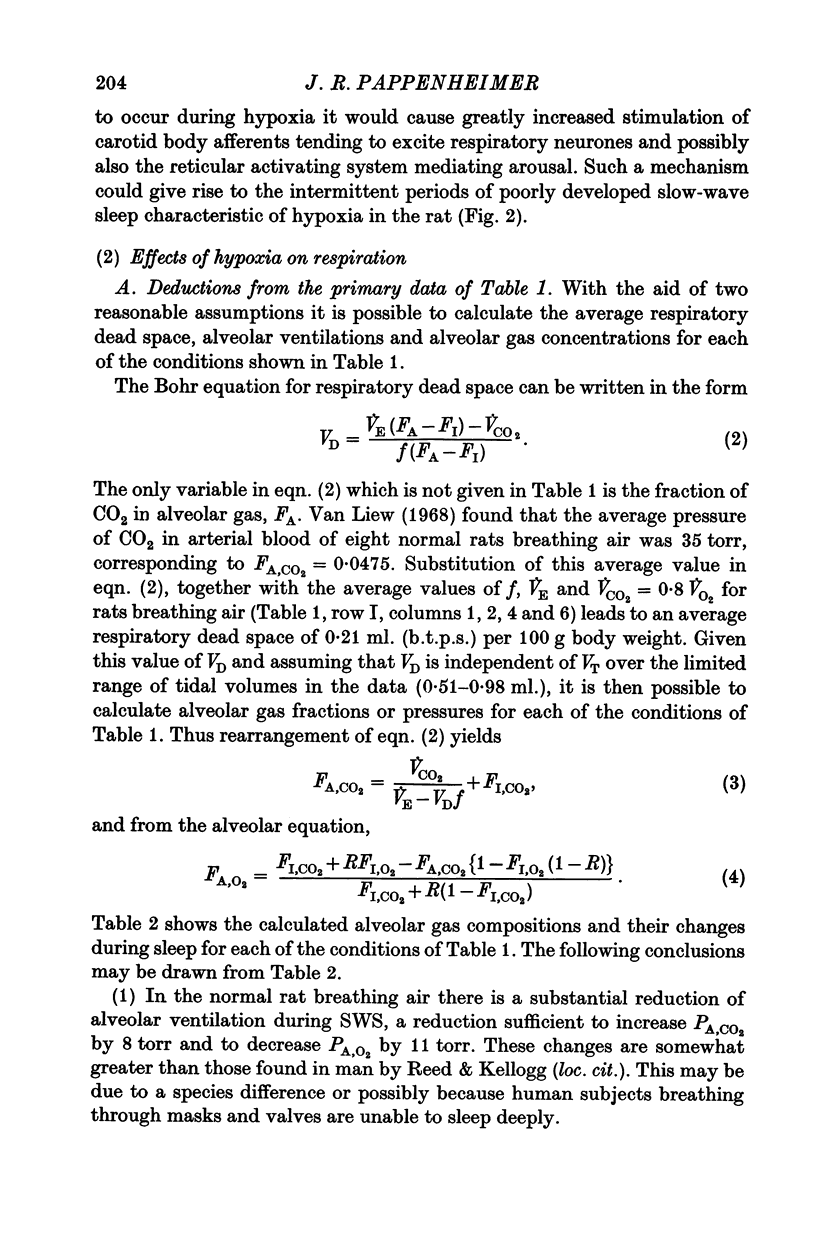
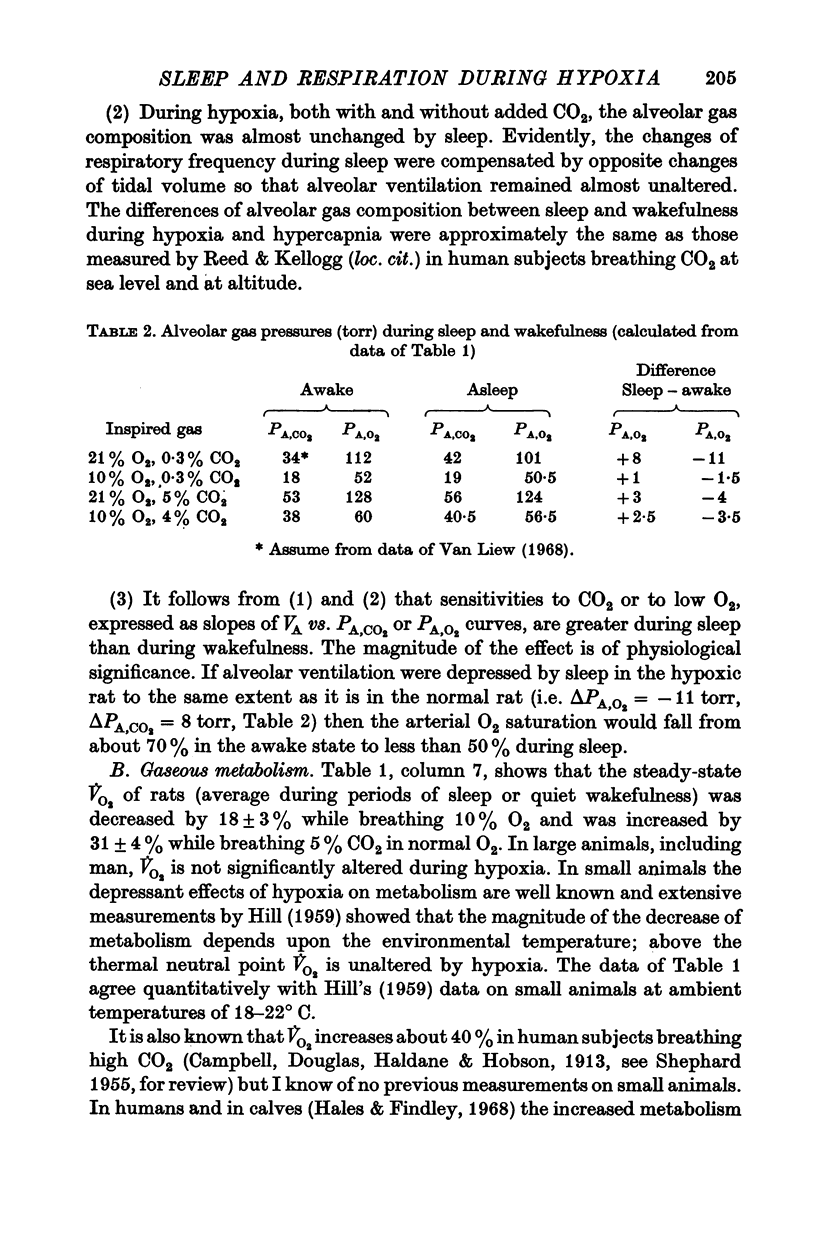
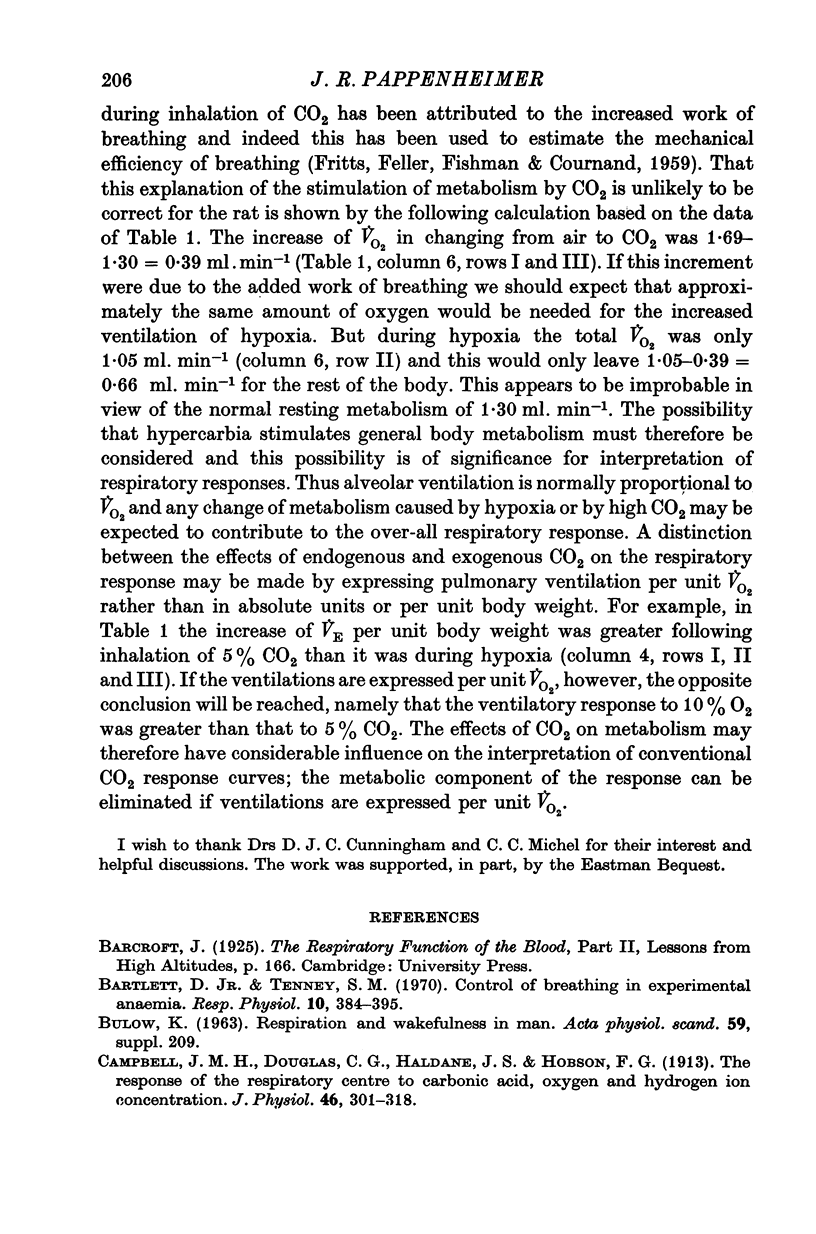
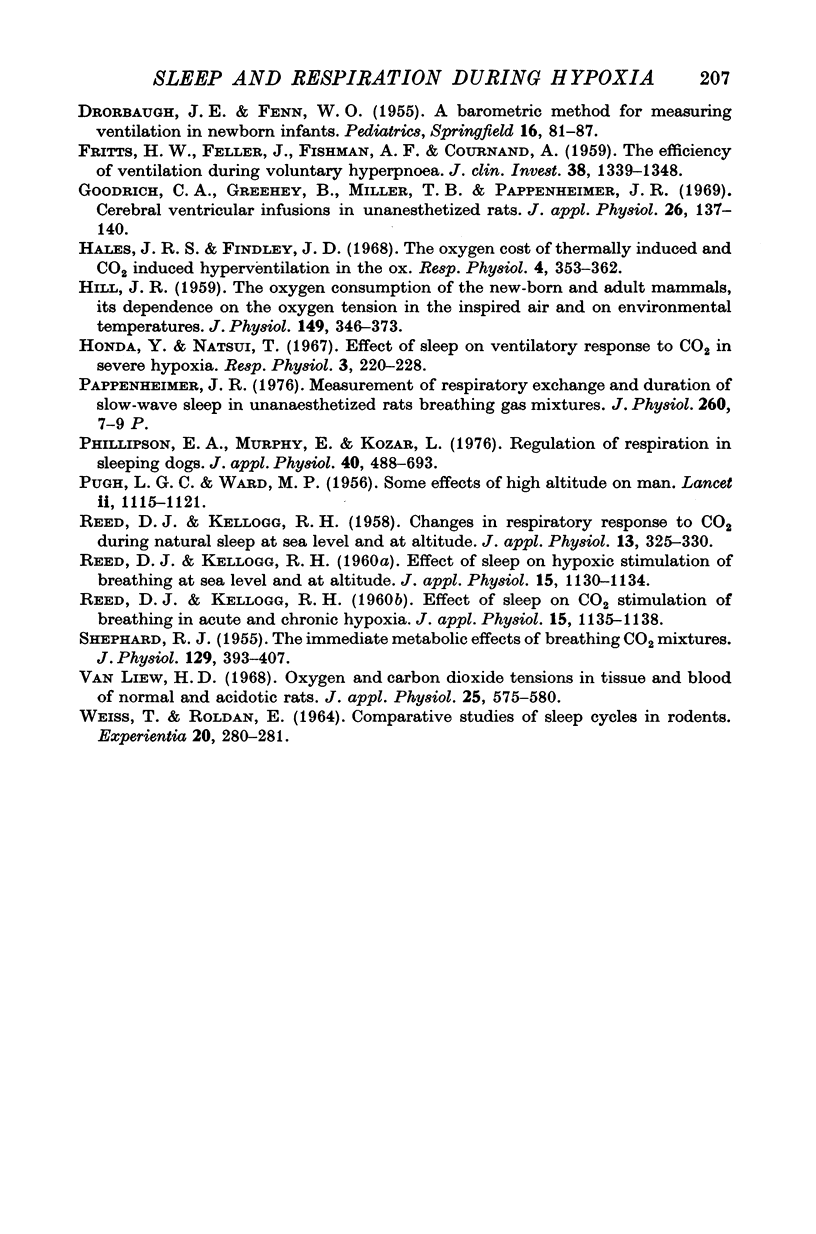
Selected References
These references are in PubMed. This may not be the complete list of references from this article.
- Bartlett D., Jr, Tenney S. M. Control of breathing in experimental anemia. Respir Physiol. 1970 Oct;10(3):384–395. doi: 10.1016/0034-5687(70)90056-3. [DOI] [PubMed] [Google Scholar]
- Campbell J. M., Douglas C. G., Haldane J. S., Hobson F. G. The response of the respiratory centre to carbonic acid, oxygen, and hydrogen ion concentration. J Physiol. 1913 Jul 18;46(4-5):301–318. doi: 10.1113/jphysiol.1913.sp001593. [DOI] [PMC free article] [PubMed] [Google Scholar]
- DRORBAUGH J. E., FENN W. O. A barometric method for measuring ventilation in newborn infants. Pediatrics. 1955 Jul;16(1):81–87. [PubMed] [Google Scholar]
- FRITTS H. W., Jr, FILLER J., FISHMAN A. P., COURNAND A. The efficiency of ventilation during voluntary hyperpnea: studies in normal subjects and in dyspneic patients with either chronic pulmonary emphysema or obesity. J Clin Invest. 1959 Aug;38(8):1339–1348. doi: 10.1172/JCI103909. [DOI] [PMC free article] [PubMed] [Google Scholar]
- Goodrich C. A., Greehey B., Miller T. B., Pappenheimer J. R. Cerebral ventricular infusions in unrestrained rats. J Appl Physiol. 1969 Jan;26(1):137–140. doi: 10.1152/jappl.1969.26.1.137. [DOI] [PubMed] [Google Scholar]
- HILL J. R. The oxygen consumption of new-born and adult mammals. Its dependence on the oxygen tension in the inspired air and on the environmental temperature. J Physiol. 1959 Dec;149:346–373. doi: 10.1113/jphysiol.1959.sp006344. [DOI] [PMC free article] [PubMed] [Google Scholar]
- Hales J. R., Findlay J. D. The oxygen cost of thermally-induced and CO2-induced hyperventilation in the ox. Respir Physiol. 1968 May;4(3):353–362. doi: 10.1016/0034-5687(68)90040-6. [DOI] [PubMed] [Google Scholar]
- Honda Y., Natsui T. Effect of sleep on ventilatory response to CO2 in severe hypoxia. Respir Physiol. 1967 Oct;3(2):220–228. doi: 10.1016/0034-5687(67)90012-6. [DOI] [PubMed] [Google Scholar]
- PUGH L. G., WARD M. P. Some effects of high altitude on man. Lancet. 1956 Dec 1;271(6953):1115–1121. doi: 10.1016/s0140-6736(56)90148-9. [DOI] [PubMed] [Google Scholar]
- Phillipson E. A., Murphy E., Kozar L. F. Regulation of respiration in sleeping dogs. J Appl Physiol. 1976 May;40(5):688–693. doi: 10.1152/jappl.1976.40.5.688. [DOI] [PubMed] [Google Scholar]
- REED D. J., KELLOGG R. H. Changes in respiratory response to CO2 during natural sleep at sea level and at altitude. J Appl Physiol. 1958 Nov;13(3):325–330. doi: 10.1152/jappl.1958.13.3.325. [DOI] [PubMed] [Google Scholar]
- REED D. J., KELLOGG R. H. Effect of sleep on CO2 stimulation of breathing in acute and chronic hypoxia. J Appl Physiol. 1960 Nov;15:1135–1138. doi: 10.1152/jappl.1960.15.6.1135. [DOI] [PubMed] [Google Scholar]
- REED D. J., KELLOGG R. H. Effect of sleep on hypoxic stimulation of breathing at sea level and altitude. J Appl Physiol. 1960 Nov;15:1130–1134. doi: 10.1152/jappl.1960.15.6.1130. [DOI] [PubMed] [Google Scholar]
- SHEPHARD R. J. The immediate metabolic effects of breathing carbon dioxide mixtures. J Physiol. 1955 Aug 29;129(2):393–407. doi: 10.1113/jphysiol.1955.sp005362. [DOI] [PMC free article] [PubMed] [Google Scholar]
- Van Liew H. D. Oxygen and carbon dioxide tensions in tissue and blood of normal and acidotic rats. J Appl Physiol. 1968 Nov;25(5):575–580. doi: 10.1152/jappl.1968.25.5.575. [DOI] [PubMed] [Google Scholar]
- Weiss T., Rokdán E. Comparative study of sleep cycles in rodents. Experientia. 1964 May 15;20(5):280–281. doi: 10.1007/BF02151809. [DOI] [PubMed] [Google Scholar]


